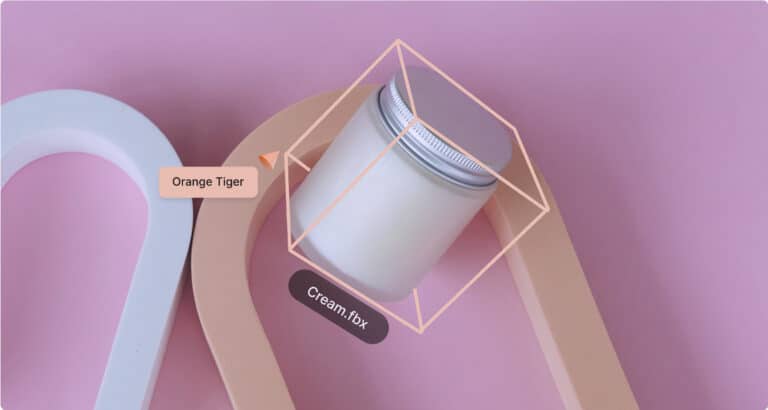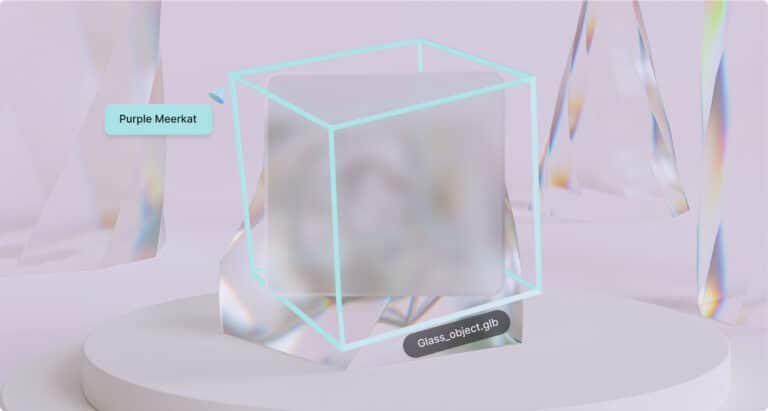Introduction
In the digital age, 3D modeling stands at the forefront of innovation, transforming industries like gaming, animation, and architecture. Central to this transformation is the 3D model file, more than just a digital asset, it encapsulates intricate details from geometry to animation sequences. The choice of the right 3D file format and file type is crucial, impacting a project’s fidelity and efficiency, especially when considering 3D printer files types and the file type for 3D printing. With a range of 3D image file formats and polygon file format available, each offers its distinct advantages, catering to varying requirements, be it high-resolution visuals or real-time rendering for VR and online gaming.
Additionally, with the growing emphasis on cross-platform compatibility and open-source ethos, the debate between proprietary and open different file formats adds another layer of complexity to the mix. This comprehensive guide seeks to illuminate the vast and sometimes perplexing world of 3D file formats and common file formats.
From delving into the nuances of popular formats to examining the specialized tools optimized for them, we aim to provide a roadmap to navigate this intricate terrain. Whether you’re a seasoned digital artist, an engineer in additive manufacturing, or a curious enthusiast, understanding the intricacies and applications of these formats, including standard file format, can elevate your projects and ensure you’re harnessing the full potential of 3D modeling mere.

Additionally, with the growing emphasis on cross-platform compatibility and open-source ethos, the debate between proprietary and open file formats adds another layer of complexity to the mix.
This comprehensive guide seeks to illuminate the vast and sometimes perplexing world of 3D mesh file formats. From delving into the nuances of popular formats to examining the specialized tools optimized for them, we aim to provide a roadmap to navigate this intricate terrain.
Whether you’re a seasoned digital artist, an engineer in additive manufacturing, or a curious enthusiast, understanding the intricacies and applications of these formats can elevate your projects and ensure you’re harnessing the full potential of 3D modeling.
The essence of a 3D model file
At its core, a 3D model file can be likened to a digital blueprint, meticulously detailing every facet of a virtual entity. Imagine a sculpture: in the physical world, it is tangible, observed from multiple angles, touched, and even interacted with.
Translating such a complex, three-dimensional entity into a digital platform necessitates capturing its every contour, texture, hue, and even its reflective properties. A 3D model file accomplishes this monumental task, acting as a repository of this expansive array of details. The specific file format employed acts as a container, safeguarding this information and often playing a pivotal role in dictating the same file type’s adaptability and compatibility across different software tools and platforms.
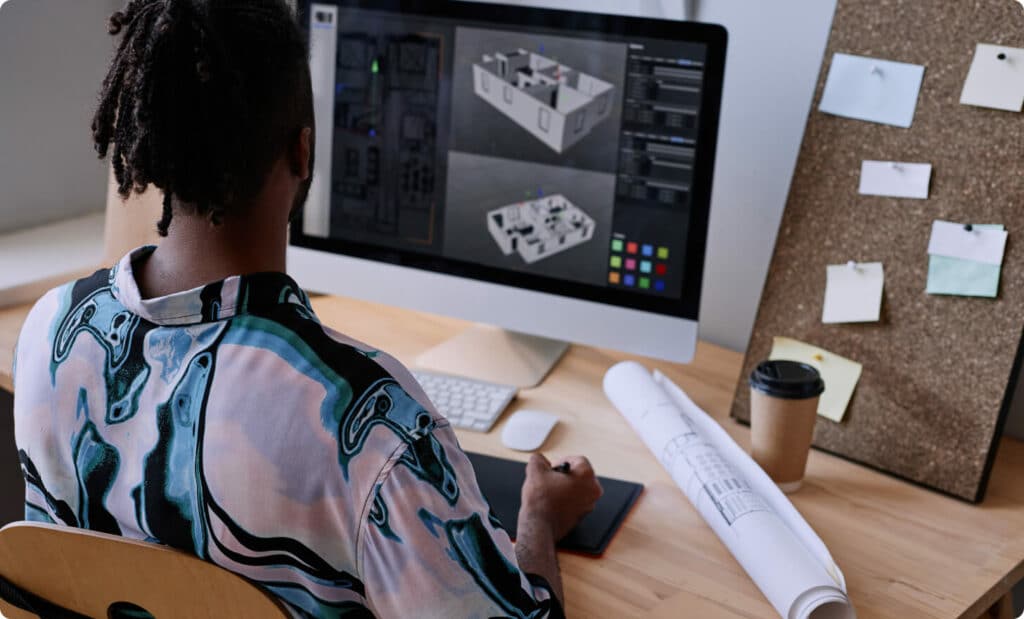
Binary vs. plain text
Peeling back the layers of a 3D model file, one encounters a fundamental dichotomy in how these files are structured: binary or plain text. Binary data, comprised of 1s and 0s, represents a compact and efficient way of storing information. This inherent efficiency translates to swift load times, ensuring that 3D models render quickly, a trait especially valuable in real-time applications like gaming or virtual reality simulations.
On the other end of the spectrum, plain text files offer a more transparent approach. Unlike the dense, machine-optimized binary files, this files are inherently legible to humans. Each line of such files can be opened, read, and edited using standard text editors.
This human-readable nature of object file fosters easy modifications, debugging, and even collaborative efforts, as professionals can annotate, share, and co-create within these files with relative ease.
Encoding surface geometry
Beyond mere storage methodologies, the true essence of a 3D model file lies in its ability to depict surface geometry. A car, for instance, is more than just its silhouette. Its aerodynamic design, the sheen of its metallic surface, the granularity of its tires, and the curvature of its seats all contribute to its overall aesthetic and functional identity.
In the world of 3D modeling, capturing these nuances is achieved through encoding surface geometry. Depending on the chosen format, the level of detail, precision, and fidelity can vary. Some formats are adept at preserving the most intricate of details, making them ideal for high-end animation or architectural simulations.
Others prioritize simplicity and speed, offering a more streamlined representation suitable for broader applications or preliminary drafts.
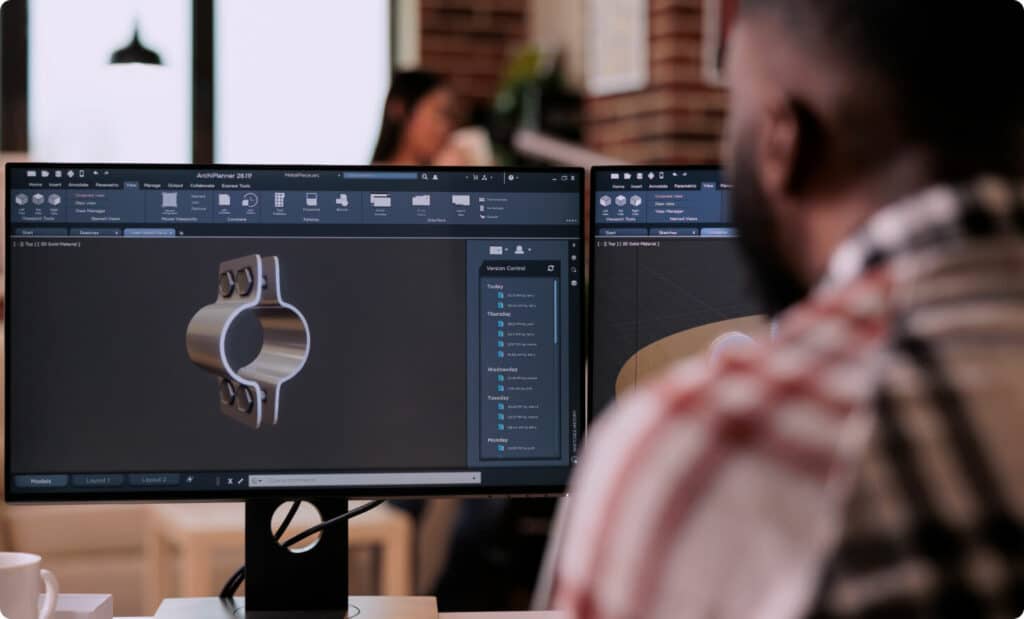
The classics: most used 3D file formats
STL file format
The STL file format is often regarded as the foundational pillar of the 3D printing ecosystem. Born out of necessity for a straightforward representation of 3D objects, the STL format emphasizes brevity and precision. While it primarily focuses on capturing surface geometric data, what it seemingly lacks in material attributes, it more than compensates in its efficiency and compatibility.
STL files have become synonymous with rapid prototyping, catering to everyone from hobbyists tinkering in their garages to professionals working on breakthrough technologies. The standard file format’s streamlined nature ensures that the core geometrical essence of a 3D model is retained, making it the go-to choice for additive manufacturing.
OBJ file format
Venture a bit deeper into the diverse landscape of 3D modeling, and the OBJ format stands tall as a beacon of versatility. Picture the OBJ file format as a digital canvas, expansive and accommodating, waiting to be filled with intricate details. Not only can it meticulously depict geometry, but it also masterfully incorporates detailed textures, breathing life into otherwise bland models.
While the core OBJ files cater to geometric representations, when paired with a separate file known for housing material attributes, the combined duo provides a holistic 3D model representation. This adaptability ensures that OBJ files find a place in various sectors, from virtual reality modeling language video game design to architectural visualizations.

FBX file format
Navigating further into the world of digital representation, the FBX format emerges, shimmering with its multifaceted capabilities. Not content with merely capturing static 3D structures, FBX files weave the dynamic tapestry of motion, embedding animation sequences within.
This potent combination of static and dynamic data ensures that the FBX format is invaluable in domains where motion is key. Whether it’s the fluid movement of characters in a video game, the choreographed sequences in animated movies, or the simulations in virtual reality experiences, the FBX format is the unsung hero, working behind the scenes to bring these visions to life.
VRML and X3D
Charting the confluence of 3D modeling and the ever-evolving internet, one encounters the VRML file format and its modern successor, X3D. Conceived with the audacious vision of integrating 3D experiences into the fabric of the World Wide Web, these formats are more than mere storage mechanisms.
They are ambassadors of interactive 3D graphics, pioneering the effort to transform passive web browsing into a fully immersive, interactive experience. Whether it’s a virtual tour of a museum, an online 3D game, or an educational simulation, VRML and X3D are at the forefront, driving innovation and ensuring the web remains a vibrant, multidimensional space.

Neutral vs. Proprietary formats: the eternal debate
Neutral file formats
In the vast ecosystem of 3D modeling, neutral formats like STEP and IGES format stand as pillars of flexibility and adaptability. Designed to be agnostic of specific software or vendors, these formats serve as the universal translators in a world dominated by various, often incompatible, software platforms.
Acting as bridges, they ensure that data flows seamlessly between diverse systems, preserving the integrity and fidelity of 3D models. Their neutrality and versatility have carved their position among the industries ranging from automotive design to aerospace engineering.

STEP file format
Diving deeper into the realm of neutral formats, the STEP file format, an acronym for Standard for the Exchange of Product model data, emerges with a reputation for comprehensive representation. As an ISO-standardized format, STEP doesn’t merely store geometric data. It encapsulates a broad spectrum of information ranging from the aesthetics of colors to the intricacies of materials.
This vast repertoire key features ensures that it remains a darling among CAD programs, especially in sectors where precision and detail are paramount.
IGES format
The story of IGES (Initial Graphics Exchange Specification) is a testament to adaptability. Originally conceptualized for the defense industry’s needs, it has since morphed into a ubiquitous exchange format, serving myriad industries. Its evolution signifies the universal need for a robust, reliable exchange mechanism, irrespective of the industry’s nature.
Proprietary formats
Venturing away from the universality, one encounters the specialized realm of proprietary formats. These formats, tailored to the nuances of specific software, often offer features and capabilities that might be absent in their neutral counterparts.
The trade-off, however, is in their exclusivity. For instance, the MAX format is an intrinsic part of Autodesk’s 3DS Max. While such formats can unlock advanced functionalities within their native software, they occasionally act as walled gardens, potentially limiting interoperability with many other formats and platforms.
Blender’s blend files
In the pantheon of 3D modeling software, Blender holds a distinct position, and so do its proprietary format, Blend files.
These files, native to Blender, are repositories of rich information. They are more than mere storage units, encapsulating everything from intricate 3D models and dynamic animations to powerful scripts that dictate behavior.
Blend files are a testament to Blender’s commitment to offering a comprehensive, open-source 3D modeling solution to enthusiasts and professionals alike.
Emerging titans: the formats shaping the future
As the digital realm continues to evolve, so does the demand for efficient and versatile 3D file extension. Modern challenges, such as real-time rendering and augmented reality, require formats that can deliver high-quality results without compromising performance. In this dynamic landscape, a few names have started to shine brighter, indicating the direction in which the future of 3D modeling is headed.

GL Transmission Format (glTF)
glTF, often hailed as the “JPEG of 3D,” is at the forefront of this revolution. More than just a file format, it represents a paradigm shift in how 3D graphics are transmitted and rendered. Unlike traditional formats that might focus solely on storing data, glTF is engineered for optimal transmission.
This means that glTF files not only encapsulate intricate 3D information, including intricate animation data, but they also do so in a manner that’s streamlined for real-time rendering. Whether it’s gaming, web graphics, or immersive virtual reality experiences, glTF is quickly becoming the go-to choice for developers and designers seeking efficiency and performance.
USD and USDZ
The world of animation and visual effects reveres the name Pixar, not just for its blockbuster movies but also for its technological innovations. Enter USD (Universal Scene Description) and USDZ, two proprietary formats birthed from Pixar’s labs. While both carry the Pixar pedigree, they cater to slightly different needs.
The USD files are versatile juggernauts, housing detailed 3D information, making them an ideal choice for animation studios, visual effects houses, and anyone seeking a robust format for high-end graphics. On the flip side, USDZ are USD’s sleeker siblings.
As zipped variants, they are tailored for augmented reality (AR) applications, particularly on Apple devices. Their compact nature, combined with their ability to deliver rich AR experiences, ensures that USDZ files are rapidly gaining traction in the AR development community.

Compatibility: the heart of the matter
As we tread deeper into the realm of 3D modeling and digital design, the topic of compatibility becomes ever more significant. It’s not just about having a file; it’s about ensuring that the file can be accessed, edited, and shared across various platforms without losing its integrity.
Software considerations
The digital terrain is rife with challenges, and one of the towering hurdles is software compatibility. With a plethora of software packages available in the market, each with its unique nuances, the issue becomes evident: Not all file formats seamlessly integrate with every software suite. This is especially true when dealing with proprietary formats.
Such files, while potentially offering advanced features or benefits within their native platforms, might present challenges when one tries to open them in alternative software programs.
In many cases, users might need additional plugins or specialized converters to bridge the divide, sometimes leading to a potential loss of data or quality.
Interchange formats
In the light of these challenges, the industry has seen the rise of interchange formats. Formats like FBX and OBJ, which were developed keeping compatibility in mind, serve as a universal language in the 3D modeling world.
Their ability to product data to be imported and exported across a vast array of software has solidified their position as some of the most popular interchange formats. They act as the much-needed bridges, ensuring smooth data transition between different platforms and applications.

Niche formats
Diving further into specialization, we encounter niche formats. These are tailored for specific industries or applications, often addressing unique challenges or requirements.
For example, the AMF file format stands out in the realm of 3D printing. It was sculpted with the intricacies of additive manufacturing in mind, ensuring precise representations of objects to be printed.
On the other hand, the IGES file format, while having broader applications, has found its niche serving the exacting needs of the aerospace and defense industries, where precision and reliability are paramount.
The need for file formats in different industries
The digital age has brought about a renaissance in various industries. With the evolution of technology, it has become evident that the choice of file format can greatly influence the outcome and efficiency of projects. Each sector has its unique demands, and thus, specific file types and formats have been developed or adopted to meet those needs.
Film and animation
The world of film and animation is a testament to human creativity and technology’s power to bring imagination to life. In these sectors, the depth and fluidity of movement are paramount. Formats that can seamlessly integrate complex animation data, such as FBX, stand out in this landscape.
They cater to the nuances of character movements, intricate facial expressions, scene transitions, and even atmospheric elements, ensuring that the audience gets an immersive experience.
Given all the data and sheer detail involved – from the flutter of an eyelid to the sway of trees – it’s no surprise that robust and versatile formats are non-negotiable here.

Virtual reality (VR) and augmented reality (AR)
As we stand on the precipice of a new digital frontier, the realms of VR and AR are expanding at an exponential rate. These industries aren’t just about visuals; they’re about immersion and interaction. As such, file formats that prioritize interactivity become the pillars.
The VRML format, with its origins tied to the early days of the World Wide Web, and USDZ files, designed with modern AR applications in mind, are examples of other file formats already leading the charge. They ensure that users aren’t just spectators but active participants in digital environments.
Additive manufacturing and 3D printing
The magic of turning digital designs into tangible objects lies at the heart of additive manufacturing and 3D printing. In this intricate dance of technology, the emphasis is squarely on precision, accuracy, and fidelity. Any discrepancy between the digital model and the printed object can lead to functional failures or aesthetic imperfections.
Therefore, formats like the AMF file format and the STL format emerge as champions. They are sculpted with the intent of ensuring that every curve, edge, and surface of the digital design is replicated with utmost accuracy in the printed product.

In conclusion: a sea of choices
The realm of 3D modeling and animation is a testament to the harmonious melding of human creativity and technological prowess. It’s a vast expanse, constantly pushing boundaries and evolving with the tides of innovation.
Every wave brings about new challenges, but also new opportunities. At the heart of these opportunities lies the selection of the appropriate file format.
Understanding the crucial role of file formats
As with many things in the digital world, the minutiae matter. A file format, though often overlooked, serves as the backbone of any 3D project. Opting for the right file format doesn’t just ease the technical process; it also impacts the quality of the final output.
It’s the difference between a smooth, streamlined workflow and a challenging, obstacle-ridden one. Whether it’s preserving the fidelity of designs in 3D printing or ensuring fluid animations in a feature film, the open file format can make or break the outcome.
Highlighting the pinnacle of tools: 3D Viewer MAX
Amidst the sea of software options available to professionals and enthusiasts alike, 3D Viewer MAX stands tall like a lighthouse. It’s not just another tool; it’s a comprehensive solution designed with the user’s needs at the forefront.
The fact that it’s a 3D viewer free is almost unbelievable, given its capabilities. Whether you’re working with an STL format for a 3D printing project or importing FBX files for a game development task, this software ensures that the journey is as smooth as the destination.
Moreover, for those who wish to explore further, there’s RealityMAX. While it offers a similar base experience, its paid upgrades can be game-changers, especially for sectors like education, engineering, and design.
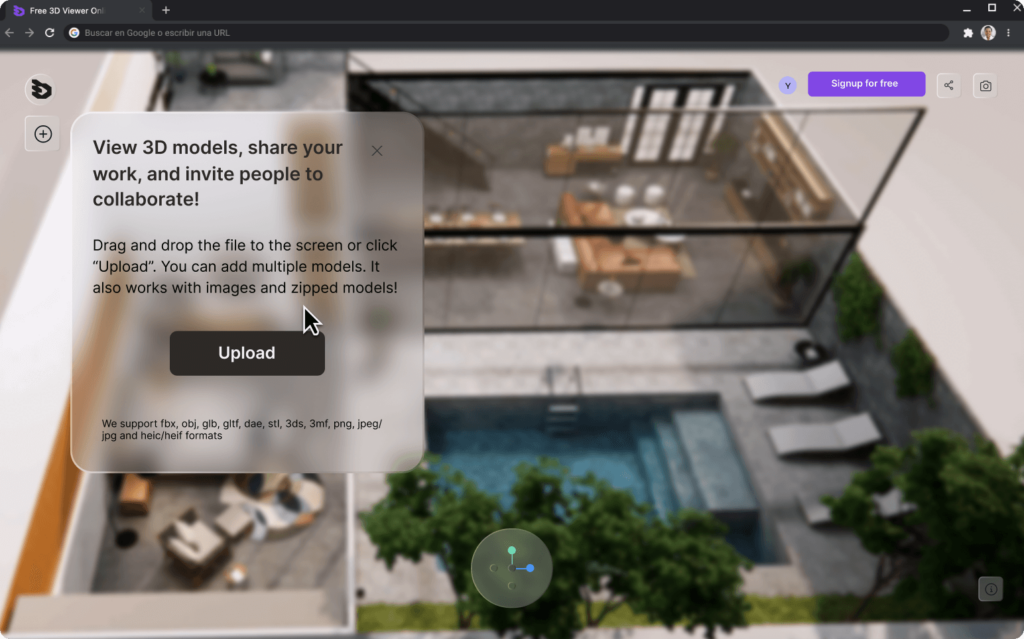
Final thoughts
As we sail through the intricate waters of 3D modeling and animation, equipped with the knowledge and tools, it’s crucial to remember the potential that lies ahead.
With the right format and the right software, what once seemed like distant horizons can now become tangible realities. Let’s embark on this voyage with an open mind and the best tools at our disposal.



